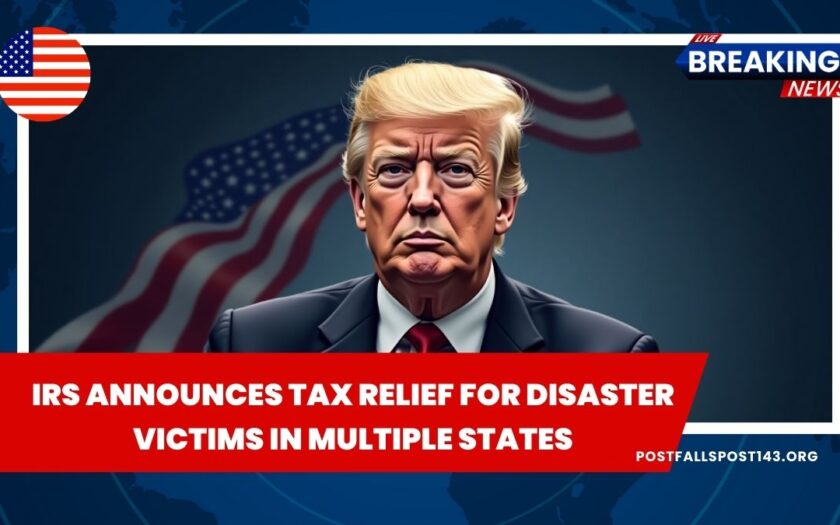The Internal Revenue Service (IRS) has officially extended tax deadlines for residents impacted by natural disasters across several U.S. states in 2025. This extension offers significant tax relief, including more time to file individual or business tax returns and to make required payments.
The new extended deadline is November 3, 2025, and it applies to both income tax filings and payments. Let’s break down which states are included, the type of disasters involved, and how you can check your eligibility.
States Eligible for IRS Tax Relief in 2025
As of July 2025, the IRS has confirmed tax relief in the following states due to specific natural disasters:
| State | Type of Disaster | Event Date | New IRS Deadline |
|---|---|---|---|
| Mississippi | Storms, Tornadoes, Flooding, Straight-line Winds | March 14, 2025 | November 3, 2025 |
| Texas | Severe Storms and Flooding | March 26, 2025 | November 3, 2025 |
| Missouri | Tornadoes, Wildfires, Storms, Straight-line Winds | March 14, 2025 | November 3, 2025 |
| Oklahoma | Wildfires, Straight-line Winds | March 14, 2025 | November 3, 2025 |
| Virginia | Winter Storms, Flooding | Early 2025 | November 3, 2025 |
| Tennessee | Various Severe Weather Events | Early 2025 | November 3, 2025 |
| Arkansas | Natural Disaster Events | Early 2025 | November 3, 2025 |
| Kentucky | Storm-Related Damages | Early 2025 | November 3, 2025 |
| West Virginia | Storms and Flooding | Early 2025 | November 3, 2025 |
What Does the IRS Tax Relief Include?
This IRS tax relief program grants:
- Extended deadlines for individual and business tax returns
- Postponement of estimated tax payments
- Waivers for late-filing penalties
- Relief from interest on delayed payments
The relief applies only to taxpayers located in disaster-declared areas under FEMA designations. Businesses, self-employed individuals, and individual taxpayers can all qualify depending on their ZIP code and FEMA approval.
How to Check Your Eligibility
To find out if you qualify for IRS disaster relief, follow these steps:
- Visit the IRS Disaster Relief Portal
Go to - Click on “Get Information for Your State”
This will guide you to a detailed list of disaster-declared regions with relief info. - Check by Date or Location
Scroll down to the “Tax Relief by Date” or “Tax Relief by State” section. - Match with FEMA Declaration
Eligibility is confirmed based on FEMA disaster declarations, which outline specific ZIP codes.
What You Should Do If You’re Eligible
- Don’t panic if you missed previous deadlines – you now have until November 3, 2025.
- Gather all necessary documents affected by disaster (e.g., insurance claims, repair receipts).
- Use IRS assistance tools or call the IRS Disaster Hotline if you’re unsure about your status.
- Act soon to avoid penalties once the relief window closes.
The IRS is providing critical relief to individuals and businesses in states affected by natural disasters in 2025. With an extended deadline until November 3, 2025, impacted taxpayers in states like Mississippi, Texas, Missouri, Oklahoma, and others have the chance to catch up on tax filings and payments without penalties.
If you’ve been affected, it’s important to check your eligibility and take action now to secure the relief you’re entitled to.
FAQs
What types of taxes are included in the IRS disaster relief program?
The relief typically covers income tax, self-employment tax, and business tax returns, as well as estimated payments.
Do I need to file a special form to get the extension?
No. If your address is in a FEMA-designated disaster zone, the extension is automatic. However, double-check via the IRS website.
Can I claim disaster-related losses on my tax return?
Yes. You can choose to claim disaster-related losses on the return for the year the disaster occurred or the previous year, depending on which provides a better benefit.

